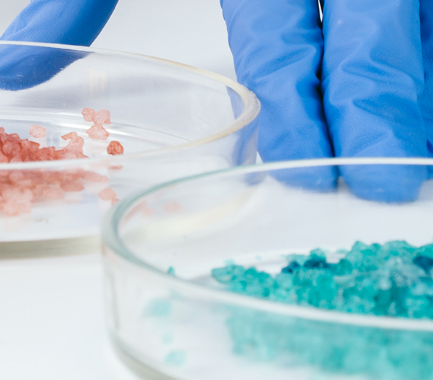Your contact
PENPET-Team - Hamburg

Christoph Meister
Sales
Tel. +49 (0) 40 - 675 7 99 30
sales@penpet.de
Get in touch with us.
Butyl acetate (Butac)
Butyl acetate (Butac) is a substance from the group of carboxylic acid esters that is mainly used as a solvent. The compound is produced on an industrial scale by esterification of n-butanol and acetic acid using acidic catalysts such as sulfuric acid or p-toluenesulfonic acid. The compound occurs naturally in numerous fruits and is contained, for example, in apple aroma.
Butyl acetate is used as a solvent in various fields of application. The chemical industry uses the substance in the production of polyacrylates, vinyl ester resins and nitrocellulose, among other things. In trade and industry, it is used as a stripper and thinner for old paints and varnishes. The compound is also contained in nail polish removers. Medicine and biology use them as an intermedia for the preparation of organs and tissue. Butyl acetate is important as a synthetic flavoring for the food industry.
You can easily order the required amount of butyl acetate (Butac) from PENPET. We look forward to receiving your inquiry for an individual offer. The delivery is made as liquid in tank containers or in IBCs.
CAS no. 123-86-4
EINECS no. 204-658-1
Molecular formula: C6H12O2
Synonyms: n-butyl acetate, n-butyl acetate, butyl ethanoate, butyl acetate, butac
Areas of application: Use as a solvent in the chemical industry, thinner for paints and varnishes, nail polish remover, preparation liquid in biology and medicine, synthetic flavoring for food
More Information
As a carboxylic acid ester, butyl acetate (Butac) consists of two components, an alcohol and a carboxylic acid. This is illustrated by the alternative designation acetic acid n-butyl ester. The substance is made up of equal parts of molecules of acetic acid and n-butanol, which are connected via an ester group during its production. This bond can be reversed by hydrolysis methods and the compound can be converted back into its starting materials.
Butyl acetate is more precisely identified as n-butyl acetate to distinguish it from isomeric substances that have a similar structure. Their structure differs in the spatial arrangement of some molecular components. The isomers are referred to as isobutyl acetate, sec-butyl acetate and tert-butyl acetate or isobutyl acetate, sec-butyl acetate and tert-butyl acetate.
Under normal conditions, the compound is a colorless liquid that melts at -76 °C and boils at 126 °C. Butyl acetate (Butac) has a pleasant, fruity odor reminiscent of apple, pineapple and banana. The substance is only poorly soluble in water. However, it forms an azeotropic solution with it, in which the mixture of both substances has a common boiling point and can no longer be separated by simple distillation. Undissolved parts of butyl acetate float on the water due to their lower density. Butyl acetate is miscible with many organic solvents such as ethanol, diethyl ether, propylene glycol, acetone and chloroform. The compound is volatile and should only be stored in airtight containers.
Butyl acetate (Butac) is a chemically stable compound when stored under recommended conditions, but will react with strong bases, strong acids and strong oxidants. It interacts violently and dangerously with substances such as alkali hydroxide and potassium tert-butoxide. There is also a risk of explosion if butyl acetate comes into contact with strong oxidizing agents. The substance is a strong solvent and can dissolve plastics and synthetic resins.
Butyl acetate (Butac) is combustible and highly flammable. There is a particular hazard from vapors of the substance. These can combine with the ambient air to form explosive air-vapor mixtures, spread out unnoticed and collect on the ground due to their higher density. Remote ignition of the connection is therefore possible. Butyl acetate must therefore be kept away from sources of ignition such as hot surfaces, electrostatic discharges, sparks or open flames. Combustion of the compound releases acrid fumes, noxious substances and hazardous gases such as carbon monoxide.
When handling butyl acetate (Butac), transport regulations and limit values for exposure at the workplace must be observed. The fumes from the compound are irritating to the eyes and upper respiratory tract. Inhalation of increased concentrations leads to disorders of the central nervous system. These can include feelings of weakness, dizziness, light-headedness and unconsciousness, but also respiratory paralysis and cardiac arrest. Repeated or prolonged contact of the liquid with the skin can lead to degreasing and irritation of the affected areas. Severe irritation and chemical burns of the cornea are possible on the eye. In the event of direct exposure, the affected parts of the body should be rinsed thoroughly with water immediately. A medical check-up is recommended. Swallowing large amounts of butyl acetate will cause irritation of the gastric mucosa and gastrointestinal symptoms.
The substance is considered to be slightly hazardous to water. The release of butyl acetate into bodies of water, the ground or the sewage system must therefore be avoided and the responsible authorities reported in the event of an accident.
